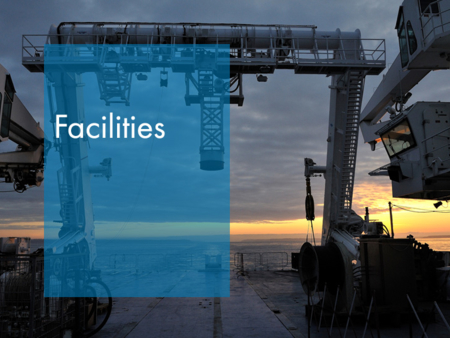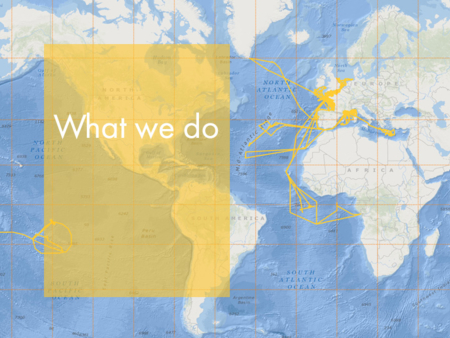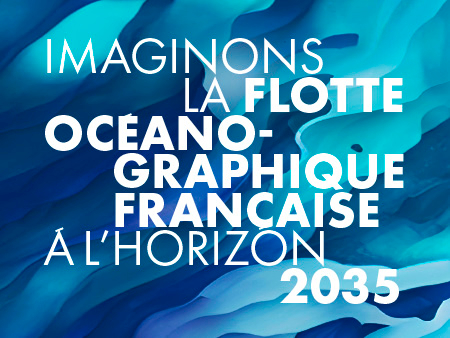The future of the Fleet
Scientific and technological foresight studies indicate the emergence of new needs for underwater missions in the fields of exploration, mapping, monitoring and short or long-term observation. Future work scenarios demonstrate the need to cover large areas (from 1 to 100 km²) or timespans (from snapshot observation to monitoring over several years) by generating quantitative observations involving numerous topographical, physical and biochemical parameters.
Technological research in France’s maritime spaces will focus on three main topics which will lead to the creation of high-performance multi-device scenarios, or a future department of monitoring stations. The topics are concepts of embedded intelligence and autonomy for Autonomous Underwater Vehicles (AUV), technical progress in the remote operation of Remotely Operated Vehicles (ROV), and the interconnection of devices and tools in scenarios featuring multi-system operations.
Embedded intelligence and autonomy, in particular devices which have no physical link to the surface, will develop new embedded decision-making capacities, implementing intelligent mission strategies, underwater navigation methods and the fusion of optical and acoustic data. In order to rise to the challenge presented by numerous scientific fields and applications, tools for programming and validating mission plans (associated with “blocks” for interpreting multi-sensor data) will have to be very easy to use to enable the implementation of new strategies in the field.
On the energy-harnessing side, the capacity for storing power on the vehicle and optimizing its consumption will have a positive impact on endurance and be coherent with the advances in autonomy described above.
The remote piloting of underwater operations requires, in order to create a paradigm shift in the field of ROVs, new perception techniques based on innovative methods to provide a “continuous perception” of the environment where the operation is taking place. Such perception would comprise exteroceptive data in a 3D model. By integrating high-level application information as the mission progresses, this 3D model would become the virtual scene of operations, enabling the user to control the vehicle’s movements and actions to take measurements, samples and so on.
Semi-automatic actions will release the pilot from having to deal with lower-level tasks. By taking into account the context of the action in progress, the servo-controls of the vehicle and the ship will lead to smoother manoeuvres and operations. Software tools for managing collaborative dives will enable operators to take full advantage of the possibilities created by telepresence.
Transferring equipment between the seafloor and the surface, by means of tethered or autonomous shuttles that are capable of making regular trips, is a major challenge for efforts to support ROVs and get the most out of long dives.
Multi-system approaches will exploit several types of mobile and permanent devices in scenarios involving greater interconnectedness and networking. They will require new tools for high-speed wireless communications, functions and instruments for piloting, and mechanical (maintenance, equipment transfer, etc.) and software (data, programming, etc.) connections.
With a view to greatly improving the performance of embedded echo sounders, R&D in underwater acoustics is turning its attention to leveraging the practice of measuring of reflectivity (of the seafloor or the water column) by single or multi-beam echo sounders, a subject of growing interest among the various communities of users, scientists and industries. A standard approach in fisheries, it offers promising avenues for progress in the sonar mapping of the deep sea. The approach will be based on refinements to the procedure for calibrating reflectivity levels measured by single and multi-beam echo sounders of the French Oceanographic Fleet, and constitutes an important stage on the way to exploiting the reflectivity of targets in the water column and on the seabed.
The discipline of environmental acoustics studies the impact of sound waves on marine species. By leveraging greater cooperation at national and international levels (NOAA – USA), the works will integrate new classes of marine mammals and new levels of dangerousness that need to be taken into account during the assessment of the Fleet’s tools. The works will also be open to other applications, such as the limiting of accidental catches (dolphins, marine turtles) in fishing nets by developing acoustic repelling devices. Such developments require the study, manufacture and qualification of new electroacoustic transducers.
The purpose of telepresence is to optimize scientific cruises undertaken by oceanographic research vessels by offering a larger, shore-based team the possibility to take part in the mission remotely. This concept, which uses satellite communications technology, is particularly well suited to exploration using remotely controlled vehicles deployed from coastal vessels, the latter having limited passenger capacity. Its usefulness has been demonstrated in recent years, but the future resides in the development of research cruise concepts which, by leveraging less expensive communications tools, can be undertaken in a distributed and integrated infrastructure that extends from a shore-based “fleet laboratory” to the underwater sensors, via the vessel.
Lastly, the design of oceanographic research vessels of the future must be undertaken jointly with the new generation of associated research equipment. They must ensure disruptive innovation with current vessels whose propulsion relies essentially on the use of fossil fuels. While solutions using fuel cells and batteries alone seem to be unworkable in terms of operating range, vessels of the future could explore the possibility of using hybrid propulsion (generators and batteries) in order to optimize fuel consumption and reduce emissions into the atmosphere. By 2030 we need to invent pioneering concepts for multidisciplinary oceanographic research vessels, including the use of new power sources in their energy mix and the optimization of routes and fuel consumption through progress made in weather forecasting and artificial intelligence.




